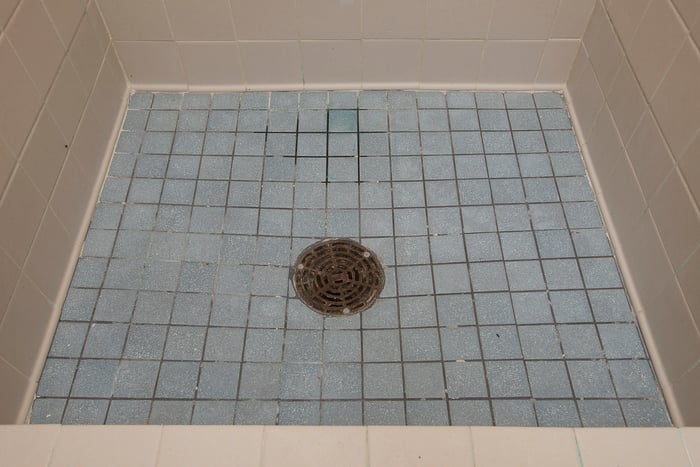Thanks to their porosity, tile and grout – in their natural state – can act like a sponge, absorbing foul liquids or wastewater with every use or cleaning.
Because of this, unsealed tile and grout surfaces are prone to issues like staining and discoloration caused by a buildup of mildew, contaminants, soap scum or hard water deposits.
These are easily remedied in most cases, but there is one particular type of discoloration to pay close attention to, as it’s often indicative of a larger problem – efflorescence.
What is it? Appearing as a white, powdery substance, efflorescence is an issue caused by excessive moisture. “Similar to the white powder left in a drinking glass when a glass of water is left to evaporate, efflorescence is caused by minerals that are soluble in water being dissolved and caried to the surface of the grout as the water evaporates,” states the Tile Council of North America, Inc.

What causes unsightly tile and grout efflorescence?
When it comes to tile and grout surfaces, efflorescence is typically caused by moisture that is trapped below the surface.
Occasionally, a thick mortar bed that lies beneath a tile and grout
floor will contain enough soluble salts to cause efflorescence when moisture is regularly passing through the mortar bed, drawn upward by warmer temperatures.
“Even when a vapor membrane is installed below the slab, penetrations in the membrane may allow sufficient moisture to cause efflorescence,” reports the Tile Council of North America, Inc.
“This moisture, invisible to the eye, is steadily traveling through the slab, the tile cement, and the grout. More efflorescence will be observed if the concrete and grout are more porous.”
Acidic cleaners or excessive chemical agents can also be a problem. If an acid wash is used on a tile and grout surface, but isn’t properly neutralized, it can damage coloring and binding agents often found in a variety of grout types.
When these agents are broken down, moisture is no longer held in suspension and efflorescence can appear. This is still indicative of a moisture problem, though, and not just damage from chemical agents.
How to Correct Your Tile and Grout Problems
Because efflorescence is an issue that arises from excessive moisture, it’s important to address and correct the deeper problem before cleaning and restoring tile and grout surfaces.
Once any subsurface moisture problems have been addressed, it’s a good idea to enlist the help of tile and grout restoration professionals.
Restoration technicians will thoroughly clean the tile and grout surface, remove any residual chemicals and make sure the surface is neutralized.
Once clean and dry, tile and grout professionals can help prevent future efflorescence by installing a nonporous coating that seals and protects both the grout lines and the entire tile surface.
Efflorescence sealers can also be used, which lubricate mineral residue to prevent it from becoming dry and powdery, and crusting on the surface.
